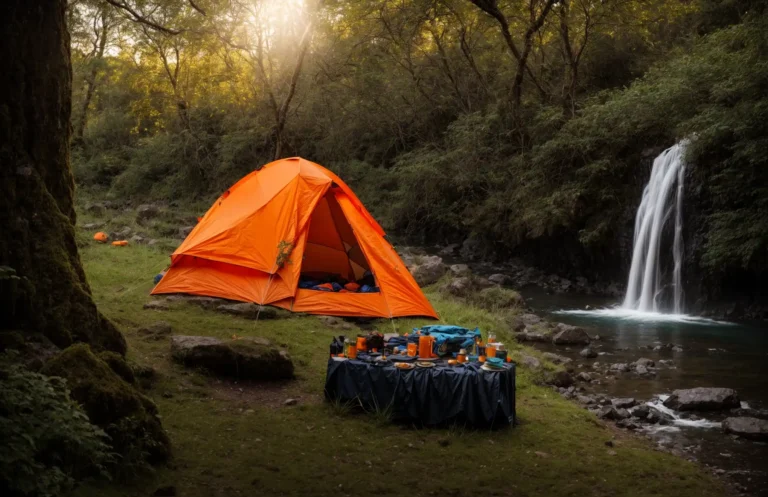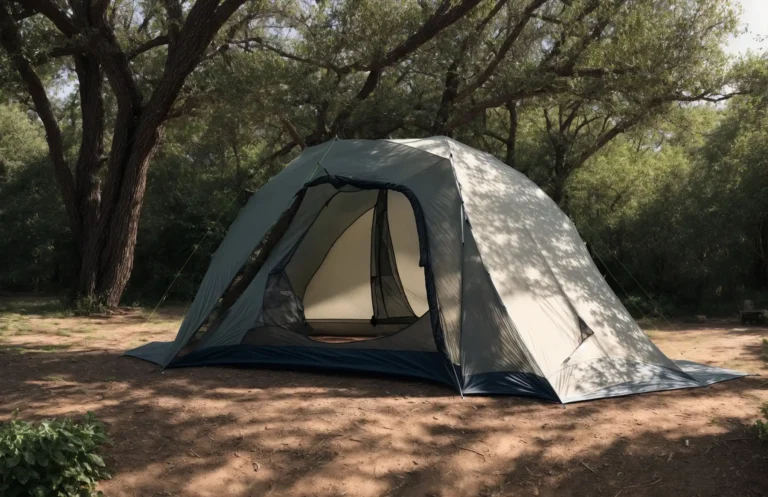A tent card is a free-standing, foldable paper card commonly used for advertising or displaying information on tables and counters.
Tent cards serve as effective marketing tools due to their placement flexibility and dual-sided visibility, often utilized on tables or counters to advertise services, products, or offers. They are staple elements in restaurants for menu specials, at conferences for seat assignments, and in hotels for room features or informational guides.
Their design typically includes a fold or crease, which enables them to stand upright without additional support. Crafted from durable card stock, these cards can catch a customer’s eye and convey messages effortlessly in high-traffic areas. Their portability and reusability make tent cards a cost-effective choice for ongoing or rotating promotions.
The Essence of Tent Cards in Marketing
Welcome to the vibrant world of tent cards, an often overlooked yet powerful tool in the marketing arsenal. These cleverly designed pieces hold a unique place in the advertising landscape, blending the traditional aspects of print marketing with the dynamism of face-to-face interaction.
Defining the Tent Card
A tent card is a self-standing promotional piece made of cardstock that prominently displays marketing messages or branding elements. Resembling a tent in structure, this versatile print item can be viewed from multiple directions, making it highly effective for tabletop advertising and on-site brand promotion. Traditionally used in establishments like restaurants, hotel lobbies, and conference events, tent cards serve a dual-purpose; they present critical information while also doubling as a subtle sales force.
The Visual Appeal of a Tent Card
The ability of a tent card to catch the eye of potential customers is its superpower. Leveraging vivid colors, impactful graphics, and concise messaging, these cards create a visual anchor that draws in viewers. This visual magnetism:
- Enhances brand recognition: A well-designed tent card becomes synonymous with the brand itself, reinforcing brand imagery and color palette.
- Encourages impulse decisions: By providing attractive offers or information, tent cards can sway purchasing decisions at the critical moment.
- Improves customer experience: Displaying useful information or tips, tent cards can enrich the customer’s engagement with the brand.
Placement Strategies For Optimal Visibility
Smart placement is essential to maximize the effectiveness of tent cards. High foot traffic areas are prime real estate for these marketing gems, ensuring they garner the most attention. Placement strategies include:
- Positioning tent cards at eye level on counters, tables, or reception areas to ensure direct line of sight.
- Using multiple tent cards throughout a venue to create a cohesive marketing narrative.
- Strategically distributing tent cards in locations where potential customers are likely to have dwell time, such as waiting areas.
By putting these strategies into action, tent cards work efficiently to broadcast your message to a captive audience, facilitating a connection that’s both visual and tactile.
Design Elements That Make Tent Cards Stand Out
Tent cards serve as versatile advertising tools, effortlessly catching the eye when strategically placed on tables or counters. The effectiveness of these miniature billboards largely hinges on their design attributes, which can significantly influence customer engagement and response. Exceptional tent cards aren’t just about information but also about captivating design elements that draw in and inform the audience. Incorporating a potent mix of messaging, color, imagery, and typography ensures these printables cannot be overlooked.
Crafting a Compelling Message
The essence of a tent card is its message. A clear, concise, and engaging narrative resonates with the audience and drives the desired action. The following pointers can greatly enhance message crafting:
- Clarity in communication – avoid overcomplicated language.
- Catchy headlines – create immediate interest and engagement.
- Value proposition – emphasize benefits or offers to the reader.
- Call-to-action (CTA) – direct and motivate readers to take the next step.
Choosing the Right Color Scheme and Imagery
Colors and images can make or break a tent card’s ability to stand out. To achieve visual harmony and maximum impact, consider the following:
- Color Psychology: Align colors with the emotion or action you wish to evoke.
- Brand Consistency: Use brand colors to maintain recognition and trust.
- Contrast: Implement high contrast for readability and focus.
- Relevant Imagery: Choose pictures that align with the content and engage the target audience.
Typography and Readability: Ensuring Message Impact
An impactful message depends not only on the words themselves but also on how they are presented. Consider these typography and readability guidelines:
| Element | Guideline |
|---|---|
| Font Choice | Use legible and brand-compatible fonts. |
| Font Size | Opt for larger sizes for headlines and sufficient size for body copy. |
| Hierarchy | Arrange text in a logical order for easy navigation. |
| Whitespace | Ensure enough space around text blocks for easy eye rest. |
By skillfully combining these typography essentials, tent cards become not just informative, but also deeply persuasive and memorable.
Practical Uses of Tent Cards in Various Settings
Tent cards serve as powerful marketing allies, effortlessly blending form and function to engage audiences in various environments. Commonly found balancing on flat surfaces, these triangularly folded pieces of cardstock offer a creative canvas for information display. Whether inviting guests to a table, advertising a special at a café, or headlining a promotion at a retail store, tent cards attract attention without the need for walls or additional stands. Let’s unfold the myriad of practical ways tent cards work their magic in diverse settings.
Tent Cards as Tabletop Advertisements in Restaurants
Restaurants have mastered the art of tabletop marketing with tent cards. Picture this: while patrons mull over menu choices, an eye-catching tent card strategically advertises the restaurant’s latest culinary experience or drink specials. The ease with which these cards can be changed or updated makes them particularly effective for promoting time-sensitive offers such as happy hour deals or limited-time dishes. Here’s how tent cards dine out on efficiency:
- Featured dishes: Highlighting chef specials or seasonal cuisine.
- Drink specials: Attracting attention to happy hour or signature cocktails.
- Rewards programs: Encouraging customers to enroll and benefit from loyalty schemes.
Tent Cards in Hospitality: Hotels and Event Spaces
Step into a hotel lobby or event space, and you’ll likely be greeted by elegantly designed tent cards. These silent concierges are deployed to convey essential information to guests, such as Wi-Fi passwords, event schedules, or wayfinding instructions. Here’s a snapshot of their roles:
- Room identifiers: Marking meeting rooms and event spaces.
- Service promotions: Showcasing spa packages or dining reservations.
- Instructional signage: Providing crucial sneak peeks into safety protocols or facility amenities.
Trade Shows and Conferences: Networking Through Tent Cards
Tent cards at trade shows and conferences act as networking ninjas, facilitating connections and sparking conversations. They adorn registration desks, lounge areas, and breakout sessions with critical networking touchpoints. Exhibitors leverage them to:
- Brand visibility: Reinforce company branding amidst a sea of competition.
- Contact information display: Make it easy for potential clients to reach out with queries or leads.
- Schedule postings: Ensure attendees are informed about presentation times and booth activities.
Retail Spaces: Promoting Products and Offers
In the bustling retail environment, tent cards act as silent salespeople, guiding shoppers’ eyes to promotions, sales, or new products. Their strategic placement next to the promoted items or at checkout counters can effectively increase impulse purchases. See them in action as they:
| Product Highlights | Special Offers | Customer Notices |
|---|---|---|
| Feature new arrivals or bestsellers. | Advertise buy-one-get-one deals or discounts. | Inform about return policies or membership benefits. |
Measuring the Effectiveness of Tent Card Marketing
We live in an era where digital and print marketing strategies intertwine to create powerful customer experiences. Among the array of print marketing tools, tent cards stand out for their versatility and effectiveness. But how can businesses determine whether their tent card marketing is hitting the mark? Measuring the effectiveness of such campaigns is key to understanding their impact and optimizing future strategies.
Key Performance Indicators For Tent Card Campaigns
To gauge the success of tent card marketing efforts, businesses must track metrics that reflect the campaign’s objectives. Consider the following key performance indicators (KPIs):
- Conversion Rates: Monitor the number of individuals who take the desired action after seeing the tent card.
- Foot Traffic: Count the increase in visitors to the location where tent cards are placed.
- Sales Volume: Measure any sales spikes that correlate with the display of tent cards.
- Coupon Redemption: Track coded coupons from tent cards to evaluate customer response.
- Customer Retention: Observe if there’s an increase in repeat customers following the campaign.
Customer Engagement and Feedback
Direct interaction with customers provides invaluable insights into the reach and reception of tent card marketing. Here’s how you can assess customer engagement:
- Collect feedback through surveys or direct questions about the tent card’s appeal and information.
- Analyze social media engagement if the tent card includes a hashtag or a handle for customers to interact with.
- Monitor QR code scans or URL visits if the tent card redirects to digital platforms.
Such engagements signal the tent card’s effectiveness in capturing interest and driving interaction.
The Role of Tent Cards in Multichannel Marketing Campaigns
Tent cards are not standalone elements; they play a critical role within broader multichannel marketing strategies. To evaluate their effectiveness:
| Strategy Component | Description | Metrics to Evaluate |
|---|---|---|
| Brand Awareness | Contributes to a cohesive brand image across various channels. | Brand mentions, reach |
| Promotional Support | Reinforces promotions advertised through different mediums. | Promotion uptake, sales during campaign period |
| Physical to Digital | Bridges the gap between in-person experiences and online engagement. | Online followers, digital interactions stemming from physical prompts |
Analyze how tent cards strengthen the synergy between print and digital mediums. A coordinated cross-channel approach enhances customer journeys, leading to higher engagement and conversion levels.
Conclusion
Tent cards stand out as versatile tools for marketers, event planners, and hosts. Creatively designed, they grab attention and convey essential information effectively. Embrace these compact powerhouses for your next event. With proper use, they promise to elevate your presentation and enhance guest experience.
Unlock their potential and watch your message stand tall. Outdoor Awaits is your compass to the camping world. Navigate your way through our Learning section for great insights.






